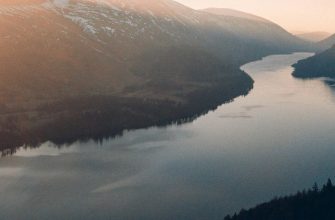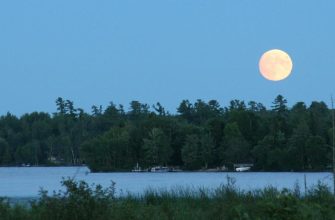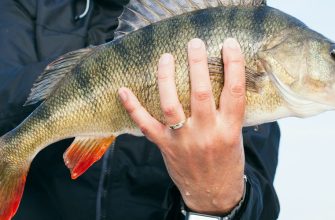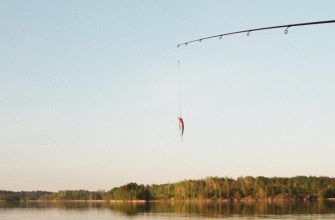- TOP-3 US National Parks for Fishing
- Yellowstone National Park, Wyoming/Montana/Idaho
- Types of Fish
- Best Fishing Spots
- Firehole River
- Yellowstone River – Black Canyon, just south of Yellowstone Lake
- Grebe Lake
- Fishing Season
- Specific Angling Rules
- Acadia National Park, Maine
- Types of Fish Catching in Acadia NP
- Freshwater Fishing
- Saltwater Fishing
- Best Angling Spots
- Jordan Pond
- Eagle Lake
- Fishing Season and Regulations
- Great Smoky Mountains, Tennessee/North Carolina
- What types of fish can you hook in the Great Smoky Mountains NP?
- When is the angling season open?
- Permitted angling methods and special restrictions and guidelines
- What are the bag limits for fish?
- Other US National Parks for Best Angling
- Glacier NP, Montana
- Rocky Mountain NP, Colorado
- Everglades NP, Florida
- Katmai NP, Alaska
- Biscayne NP, Florida
- Voyageurs NP, Minnesota
- Rock Creek Park, Washington DC
- Olympic NP, Washington
- Fishing Regulations for US National Parks
- Catch Limits and Size Restrictions
- Required Permits and Licenses
- Protected Species and Fishing Restrictions
- America’s Fishing Expert Recommendations
- Best Angling Techniques
- Gear and Equipment Essentials for Angling
- Safety Tips and Guidelines for Angling
- Essentials for National Park Angling Trips
- FAQs
- Q: What are the best national parks in America for outdoor fishing?
- Q: Can I go fishing in any national park?
- Q: What types of fish can I expect to catch in national parks?
- Q: Are there designated fishing spots within national parks?
- Q: Do I need an angling license to fish in national parks?
- Q: What are some of the best angling spots within national parks?
- Q: Can I fish for specific types of fish in national parks?
- Q: Are there any angling restrictions in national parks?
- Q: Can I fish in national parks all year round?
- Q: Can I fish for unique or rare species in national parks?
Are you ready for an outdoor adventure in the breathtaking National Parks of America? If you’re a fishing enthusiast, then you’re in for a treat. In this article, we’ll explore some of the best spots in these pristine natural havens where you can troll your rod and reel in some unforgettable experiences.
The National Park Service takes great pride in conserving and protecting the diverse ecosystems found within the parks. But did you know that many of these parks also offer excellent angling opportunities? From the picturesque islands of Acadia NP in Maine to the majestic rivers of Yellowstone, there’s no shortage of places to fish.
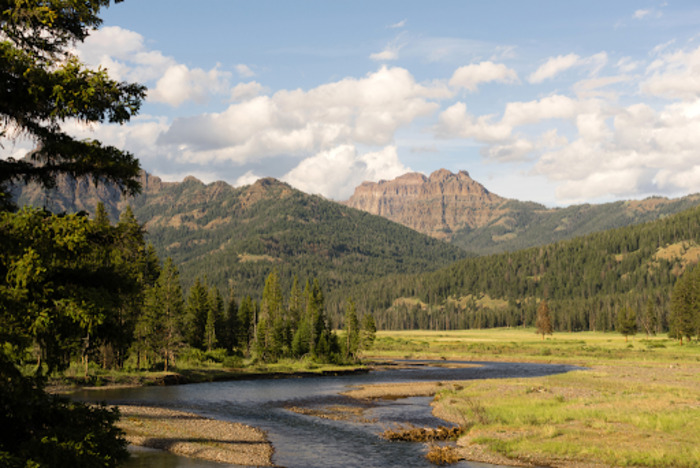
One such NP treasure is the Great Smoky Mountains NP, which straddles the border of Tennessee and North Carolina. With over 70 miles of streams, this park is a haven for native brook trout and other fish species. Whether you’re a seasoned angler or a beginner, angling in this park is a good idea for anyone who appreciates the outdoors.
Another hidden gem is the Ozark National Scenic Riverways in Missouri. With its myriad of rivers and streams, this park offers a fishery like no other. Picture yourself trolling your rod into the crystal-clear waters, surrounded by the beautiful landscape and the possibility of reeling in a trophy catch.
When it comes to angling in America’s NPs, the options are endless. Whether you’re in search of trout in Wyoming’s Grand Teton NP or hoping to hook a glimpse of a moose while angling in Alaska’s Katmai NP, there’s something for every angler.
So grab your angling rod and get ready to embark on an unforgettable angling adventure in the heart of America’s NPs. Remember to respect the angling rules and practice catch-and-release to ensure the preservation of these incredible fish populations. Get ready to create memories that will last a lifetime!
TOP-3 US National Parks for Fishing
Yellowstone National Park, Wyoming/Montana/Idaho
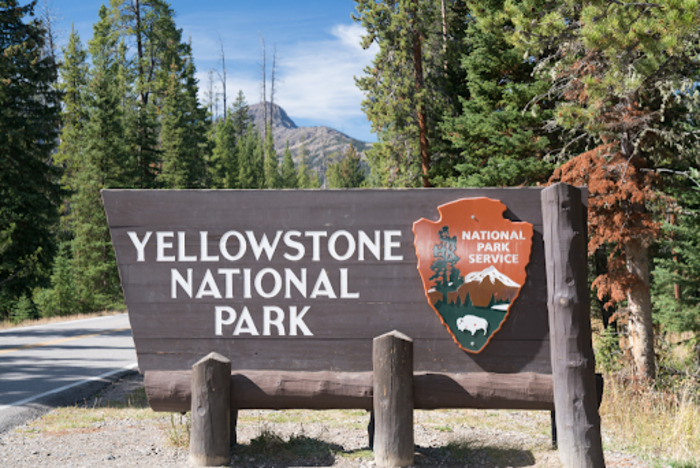
Yellowstone NP, located in Wyoming, Montana, and Idaho, is not only famous for its stunning landscapes and geothermal wonders but also offers exceptional angling opportunities.
Types of Fish
Yellowstone NP is home to a variety of freshwater fish varieties, making it a paradise for fishermen. Some of the prominent fish varieties you can encounter include salmon, rainbow trout, brook trout, lake trout and cutthroat trout. These fish species thrive in the pristine streams, rivers, and lakes of the park, providing fishermen with ample opportunities to test their skills.
Best Fishing Spots
Firehole River
The Firehole River is a popular angling destination within Yellowstone NP. Known for its geothermal features and breathtaking beauty, this river is teeming with trout. Anglers can expect to find rainbow trout and brown trout here. The warm waters of the Firehole River create a unique angling experience, especially during the prime spring angling season.
Yellowstone River – Black Canyon, just south of Yellowstone Lake
The Black Canyon section of the Yellowstone River, located just south of Yellowstone Lake, is another prime angling spot in the park. This area is known for its scenic beauty, and fishermen can enjoy angling for cutthroat trout and rainbow trout. With its deep pools and challenging currents, the Black Canyon offers an exciting angling adventure for both beginners and experienced fishermen.
Grebe Lake
Grebe Lake, nestled in the northwest corner of Yellowstone NP, offers a tranquil setting for angling enthusiasts. This pristine lake is home to cutthroat trout, providing fishermen with a serene angling experience. The calm waters and picturesque surroundings make Grebe Lake an ideal spot for fishermen seeking solitude and a chance to reconnect with nature.
Fishing Season
The angling season in Yellowstone NP typically opens in late May and lasts through November. However, it’s important to note that specific dates may vary each year, so it’s advisable to check the park’s official website or consult with park rangers for the most up-to-date information. Angling during the prime season ensures optimal conditions and better chances of a successful haul.
Read more: When is Minnesota Fishing Opener? Minnesota Fishing Regulations at 2023/2024
Specific Angling Rules
To protect the delicate biosystem and keep the fish population, Yellowstone NP has specific angling rules and regulations in place. Anglers are required to obtain a valid angling license, which can be purchased at various locations within the park. It is essential to familiarize yourself with the park’s angling rules, including catch-and-release policies and size limits, to ensure responsible angling practices.
Acadia National Park, Maine
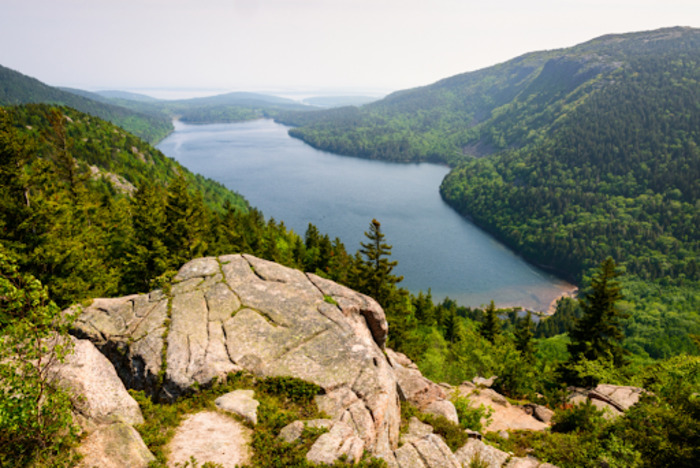
Types of Fish Catching in Acadia NP
Acadia NP in Maine offers a diverse range of angling opportunities for fishermen. Whether you prefer freshwater or saltwater angling, Acadia has something for everyone. Let’s explore the various fish varieties you can hook up in this beautiful park.
Freshwater Fishing
Acadia NP is home to several freshwater bodies, including ponds and lakes, where you can try your luck at hooking fish. One popular species to target is the brook trout. These beautiful fish are known for their vibrant colors and can be found in abundance in the park’s freshwater streams and ponds.
Saltwater Fishing
If you prefer saltwater angling, Acadia NP’s coastal areas provide excellent opportunities. The park’s proximity to the Atlantic Ocean allows fishermen to target species such as salmon and mackerel. These fish are known for their fighting spirit and are sure to give you an exciting angling experience.
Best Angling Spots
When it comes to finding the best angling spots in Acadia NP, there are a few locations that stand out. Here are some recommendations for fishermen looking to make the most of their angling trip:
Jordan Pond
This picturesque pond offers serene surroundings and is known for its landlocked salmon population. Anglers can enjoy the peaceful ambiance while trying to reel in these prized fish.
Eagle Lake
Nestled in the heart of the park, Eagle Lake is another hotspot for angling enthusiasts. Here, you can find brook trout and landlocked salmon. The calm waters and scenic views make it a favorite among fishermen.
Fishing Season and Regulations
To ensure sustainable angling practices and protect the park’s biosystem, Acadia NP has specific rules and regulations in place. It’s important to be aware of these guidelines before trolling your rod. The angling season in the park typically runs from spring to fall, but it’s always best to check with park authorities for the exact dates.
Some rules to keep in mind include restrictions on angling techniques and equipment. The park is committed to maintaining natural habitat and fish populations, so be sure to follow these guidelines to help maintain the ecological balance of the park.
Great Smoky Mountains, Tennessee/North Carolina
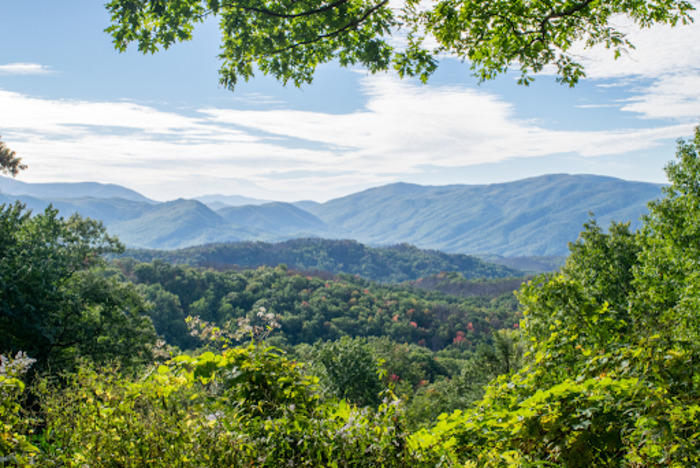
What types of fish can you hook in the Great Smoky Mountains NP?
The Great Smoky Mountains NP offers a variety of opportunities for freshwater angling enthusiasts. The park is home to various fish varieties, including brook trout, rainbow trout, largemouth bass, smallmouth bass and catfish. These fish varieties provide fishermen with exciting angling experiences throughout the park’s waterways.
When is the angling season open?
The angling season in the Great Smoky Mountains NP typically opens on the last Saturday in April and continues until November 30th. This timeframe allows fishermen to enjoy angling during the warmer months when fish are more active.
Permitted angling methods and special restrictions and guidelines
Fishermen in the Great Smoky Mountains NP are allowed to use various angling methods, including angling with artificial lures, flies, or bait. However, it is important to note that bait angling is only permitted in certain areas of the park. Additionally, the use of lead-angling tackle is prohibited to protect the park’s aquatic resources. Fishermen should also be aware of special restrictions and guidelines, such as catch-and-release rules for brook trout in select streams. It is vital to familiarize oneself with the park’s angling rules to ensure compliance and the preservation of the park’s fish populations.
What are the bag limits for fish?
The Great Smoky Mountains NP implements bag limits to maintain sustainable fish populations and preserve the natural ecosystem. Fishermen are allowed to keep a limited number of fish per day, depending on the species. For brook trout, fishermen are encouraged to practice catch-and-release to support conservation efforts. It is essential to refer to the park’s angling rules for specific bag limits and any updates or changes.
Other US National Parks for Best Angling
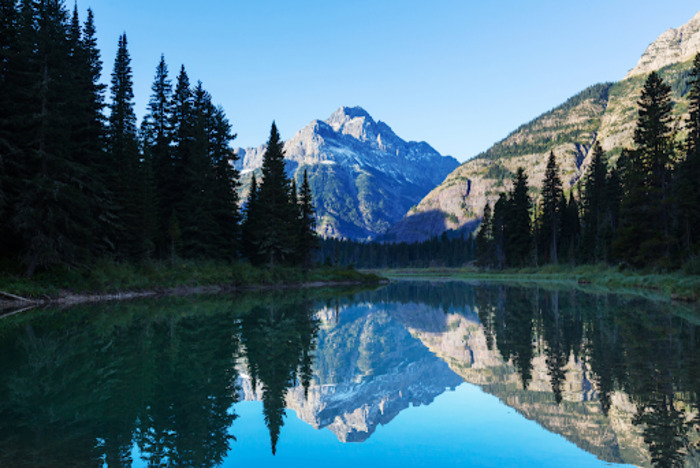
Glacier NP, Montana
The waters of Glacier NP in Montana are a paradise for fishermen. Known for its stunning landscapes and pristine lakes, this park offers excellent angling opportunities. Fishermen can try their luck at hooking cutthroat trout, lake trout and other fish varieties that inhabit these waters. Whether you prefer to fly angling or hooking from the shore, Glacier NP has something for every angler.
Rocky Mountain NP, Colorado
Rocky Mountain NP in Colorado is famous for its majestic mountains, but it also offers incredible angling experiences. The park is home to numerous lakes and rivers teeming with fish. Fishermen can target species such as largemouth and smallmouth bass, rainbow trout, and salmon. Whether you’re a novice angler or an experienced angler, Rocky Mountain NP provides abundant opportunities to reel in your next big haul.
Everglades NP, Florida
When it comes to saltwater angling, Everglades NP in Florida is a top destination. The park’s vast expanse of mangrove forests, estuaries, and coastal waters is a haven for fishermen. Here, you can find a variety of saltwater fish varieties, including snook, redfish, tarpon, and more. Whether you prefer angling from a boat or hooking from the shore, Everglades NP offers unforgettable angling experiences.
Katmai NP, Alaska
Katmai NP in Alaska is known for its incredible wildlife and breathtaking landscapes. It is also a paradise for salmon angling. Fishermen flock to the park’s rivers and streams to get a glimpse of the iconic salmon run. Angling enthusiasts can try their hand at hooking various species, including sockeye, coho, and chinook. If you’re looking for an unforgettable angling adventure surrounded by stunning wilderness, Katmai NP is the place to be.
Biscayne NP, Florida
Biscayne NP, located in southern Florida, offers a unique angling experience. With its crystal-clear waters and diverse marine life, this park is a haven for fishermen. Whether you’re interested in saltwater fly angling or deep-sea angling, Biscayne NP has it all. Fishermen can target species such as bonefish, permit, tarpon, and more. Don’t miss the opportunity to troll your rod in the waters of Biscayne NP.
Voyageurs NP, Minnesota
Voyageurs NP in Minnesota is a hidden gem for fishermen seeking a peaceful angling getaway. With its vast network of lakes and waterways, this park offers abundant angling opportunities. Fishermen can target species such as walleye, northern pike, and lake trout. Whether you prefer angling from a boat or exploring remote angling spots, Voyageurs NP promises a memorable angling experience.
Rock Creek Park, Washington DC
Rock Creek Park in Washington DC may not be the first place that comes to mind for angling, but it offers surprising opportunities. The park’s namesake, Rock Creek, is stocked with various fish varieties, including trout. Fishermen can enjoy peaceful angling moments in the heart of the city. Whether you’re a local resident or a visitor, Rock Creek Park provides a convenient escape for urban angling enthusiasts.
Olympic NP, Washington
Olympic NP in Washington is a diverse and stunning destination for angling. With its rugged coastline, pristine rivers, and alpine lakes, the park offers a wide range of angling experiences. Fishermen can target species such as steelhead, trout and more. Whether you’re angling in the rivers or hooking from the shores of the Pacific Ocean, Olympic NP will leave you in awe of its natural beauty and abundant fish populations.
Plan your next angling adventure and explore these incredible NPs for unforgettable angling experiences. Each park offers unique opportunities to connect with nature, reel in your next haul, and create lasting memories.
Remember to check local rules, obtain the necessary permits, and practice responsible angling to ensure the sustainability of these precious natural resources.
Fishing Regulations for US National Parks
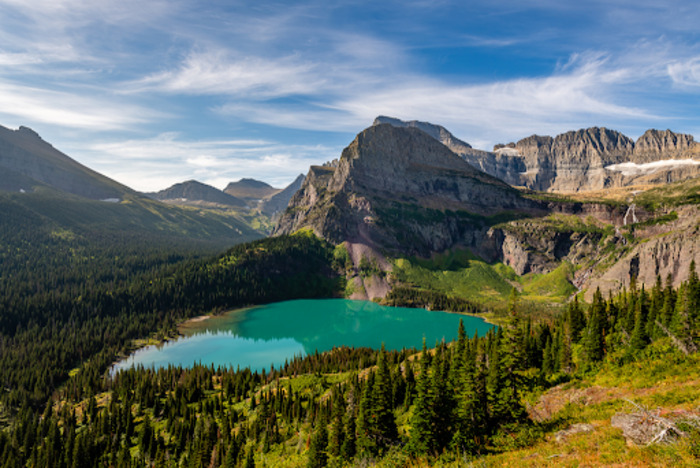
Catch Limits and Size Restrictions
In order to preserve and maintain the delicate balance of fish populations within the US National Parks, catch limits and size restrictions are enforced. These rules are put in place to ensure sustainable angling practices and to protect the ecosystems.
When angling in US National Parks, it is important to be aware of the specific limits for each fish variety. These limits refer to the maximum number of fish that can be hooked and kept per day. The purpose of catch limits is to prevent overhanging and allow fish populations to thrive.
Additionally, size restrictions are imposed to protect juvenile fish and allow them to grow and reproduce. It is crucial to release any fish that does not meet the minimum size requirement back into the water unharmed. This helps maintain healthy fish populations and ensures the long-term sustainability of angling in the NPs.
Required Permits and Licenses
Before trolling your rod in any US National Park, it is essential to obtain the necessary permits and licenses. These permits are designed to regulate angling activities and promote responsible angling practices.
Read more: Types of Flatfish in Deepest Oceans: Flounders, Soles, Turbots and Other
To fish in US National Parks, you will need a valid angling license issued by the state where the park is located. Each state has its own set of rules and requirements for angling licenses, so it is important to check the specific rules of the state park you plan to visit.
In addition to an angling license, some NPs may require a separate permit for angling within their boundaries. These permits help park authorities monitor angling activities and ensure compliance with park-specific rules. Be sure to inquire about any additional permits needed when planning your angling adventure.
Protected Species and Fishing Restrictions
US National Parks are home to a diverse range of fish varieties, including some that are protected due to their conservation status. It is crucial for fishermen to be aware of these protected species and the angling restrictions associated with them.
For instance, in Acadia NP, salmon is a protected species. Angling for this species is strictly regulated to ensure their survival and continued presence in the park’s waters. Fishermen should familiarize themselves with the specific regulations regarding salmon angling in Acadia NP to avoid any violations.
Furthermore, certain areas within NPs may have specific angling restrictions in place. These restrictions could be related to the protection of sensitive habitats or the preservation of unique fish populations. It is important to respect these restrictions and fish only in designated areas to minimize the impact on the park’s biosystem.
America’s Fishing Expert Recommendations

Best Angling Techniques
When it comes to angling in US national parks, it’s essential to have the right techniques to increase your chances of success. Here are some tried-and-true methods to enhance your angling experience:
- Fly Fishing: Fly angling is a popular technique in many NPs due to its versatility and effectiveness. Whether you’re targeting trout in the pristine rivers of Yellowstone or chasing bass in Everglades NP, mastering the art of fly angling can yield impressive results.
- Spin Casting: Spin casting is another reliable technique that works well in various NP settings. It involves using a spinning rod and reel combination, making it suitable for fishermen of all skill levels. You can use spin casting to target a wide range of fish varieties, from panfish in Acadia NP to salmon in Olympic NP.
- Bottom Fishing: Bottom angling is an excellent technique for targeting bottom-dwelling fish varieties like catfish and walleye. It involves using weights to keep your bait near the lake or riverbed, enticing fish to bite. Many NPs offer excellent opportunities for bottom angling, such as the abundant catfish populations in the Great Smoky Mountains NP.
Gear and Equipment Essentials for Angling
Having the right gear and equipment is crucial for a successful angling trip in US national parks. Here are some essentials to consider:
- Angling Rod and Reel: Choose an angling rod and reel combination that suits your angling style and the targeted fish varieties. Lightweight and versatile options are ideal for NP angling adventures.
- Tackle Box: A well-stocked tackle box is essential for any angler. Include a variety of hooks, weights, lures, and baits to cater to different angling conditions and fish varieties.
- Angling Line: Select a high-quality angling line that matches the angling techniques you plan to use and the fish varieties you intend to hook. Consider factors such as line strength, visibility, and sensitivity.
- Appropriate Clothing: Dress for the weather conditions and bring layers for unpredictable changes. Don’t forget a hat, sunglasses, and sunscreen to protect yourself from the sun’s rays.
Safety Tips and Guidelines for Angling
While enjoying your angling adventure in US national parks, it’s crucial to prioritize safety. Here are some important tips and guidelines to keep in mind:
- Check Angling Regulations: Familiarize yourself with the angling rules specific to each NP you visit. Adhere to catch limits, size restrictions, and any special rules in place to preserve the ecosystem and fish populations.
- Be Aware of Your Surroundings: Pay attention to your surroundings while angling near lakes, rivers, or streams. Be cautious of slippery rocks, fast currents, and potential wildlife encounters.
- Practice Leave No Trace: Respect the natural beauty of the NPs by practicing Leave No Trace principles. Pick up trash, properly dispose of fishing lines, and do not damage vegetation or wildlife habitat.
Essentials for National Park Angling Trips
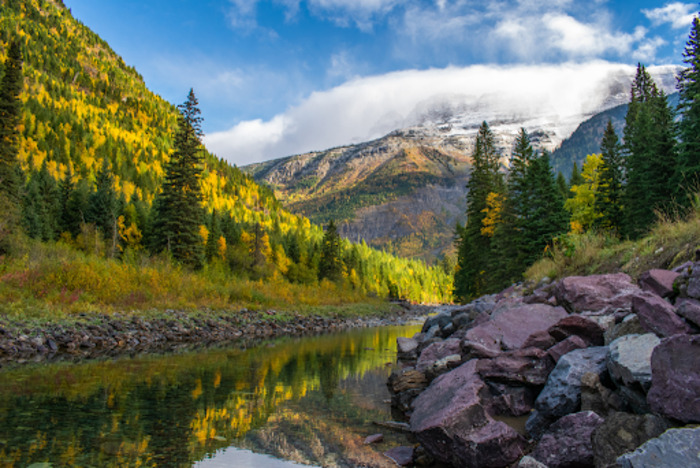
Before embarking on an angling adventure in one of America’s stunning NPs, it’s essential to be well-prepared. To have a successful and enjoyable angling trip, here are a few essentials to bring along:
- Research Angling Regulations
Ahead of time, familiarize yourself with the angling rules specific to the NP you plan to visit. Each park may have its own set of rules and guidelines to maintain the biosystem and protect the fish varieties. Understanding and following these rules not only ensures a responsible angling experience but also helps preserve the natural beauty of the park.
- Check the Weather
Weather conditions can greatly impact your angling trip. Before heading out, check the latest weather forecast for the NP. This information will help you dress appropriately and bring all the necessary gear, such as a raincoat or hat to protect you from the sun.
- Bring the Necessary Angling Gear
To maximize your chances of a successful catch, it’s important to have the right angling gear. Make sure to bring your angling rods, reels, tackle, and appropriate bait or lures. The type of fish varieties you intend to target will determine the specific gear you need. For example, if you’re planning to fish for trout, it’s advisable to pack lightweight rods and reels suitable for freshwater angling.
- Bring Essential Supplies
In addition to angling gear, there are a few essential supplies you should not forget to bring. First and foremost, ensure you have a valid angling license that complies with the state angling rules. This will prevent any legal issues and allow you to fully enjoy your angling experience. It’s also important to pack sunscreen to protect your skin from harmful UV rays, insect repellent to ward off pesky bugs, and comfortable clothing suitable for a day out on the water.
By following these essentials, you’ll be well-prepared for a memorable angling trip in one of America’s NPs. Enjoy the beauty of nature, make unforgettable catches, and create lasting memories in these prime angling spots.
Remember to always respect the environment, practice catch-and-release, and leave no trace behind, ensuring the preservation of our NPs for generations to come.
Disclaimer: The information provided in this article is based on reliable sources and research. It is always recommended to refer to official angling regulations and local authorities for the most up-to-date information.
FAQs
Q: What are the best national parks in America for outdoor fishing?
A: Some of the top national parks for outdoor angling in America include Yellowstone NP, Great Smoky Mountains NP, Glacier NP, and Yosemite NP.
Q: Can I go fishing in any national park?
A: Angling is allowed in many NPs, but it’s important to check the specific rules and regulations for each park before heading out. Some parks may have restrictions or special permits required.
Q: What types of fish can I expect to catch in national parks?
A: The types of fish you can catch in NPs vary depending on the location. Some common species include trout, bass, salmon, catfish, and various types of panfish.
Q: Are there designated fishing spots within national parks?
A: Yes, many NPs have designated angling areas with easy access to rivers, lakes, and streams. These areas are often marked on park maps and signage.
Q: Do I need an angling license to fish in national parks?
A: Yes, in most cases, an angling license is required to fish in NPs. However, some parks may offer special angling permits or exemptions for certain groups, such as children or seniors.
Q: What are some of the best angling spots within national parks?
A: Some top angling spots in NPs include the Firehole River in Yellowstone, the Fontana Lake in the Great Smoky Mountains, the Flathead River in Glacier NP, and the Merced River in Yosemite.
Q: Can I fish for specific types of fish in national parks?
A: Depending on the location, you may have the opportunity to fish for specific species such as brook trout in Yellowstone, rainbow trout in Great Smoky Mountains, or cutthroat trout in Glacier NP.
Q: Are there any angling restrictions in national parks?
A: Yes, there are often angling restrictions within NPs to help maintain healthy fish populations and preserve the natural habitat. These may include catch limits, size restrictions, and seasonal closures.
Q: Can I fish in national parks all year round?
A: Fishing seasons in NPs vary depending on the location and the type of fish. Some parks may have year-round angling opportunities, while others may have specific opening and closing dates for angling season.
Q: Can I fish for unique or rare species in national parks?
A: Yes, NPs can be home to unique and rare fish species, such as grayling in Glacier NP, native cutthroat trout in Yellowstone, or smallmouth bass in the Great Smoky Mountains. Always check with the park service for more information on specific species.

